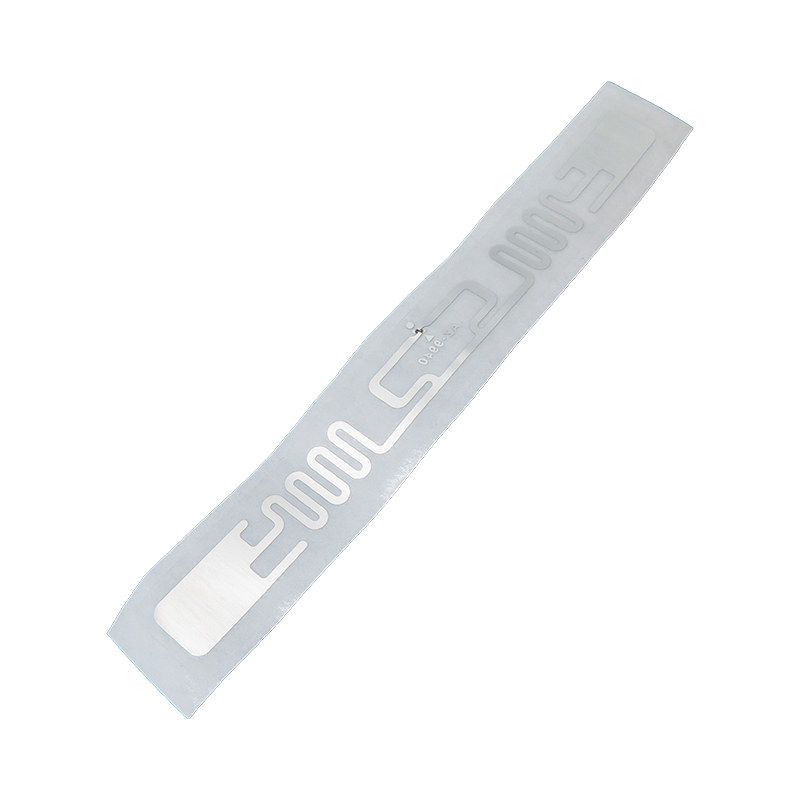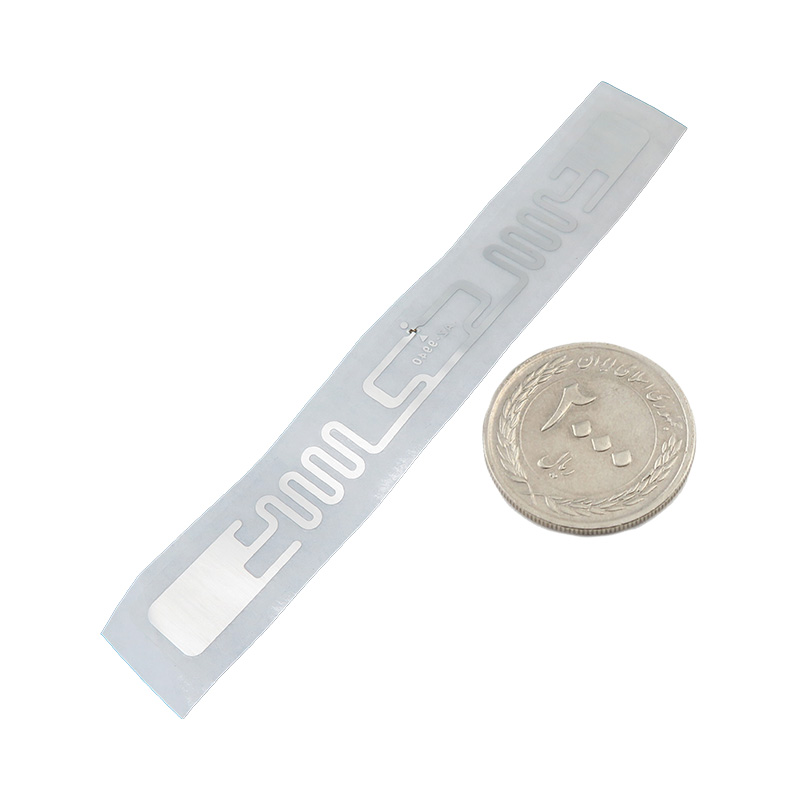9,680 تومان
در حال حاضر موجود نمی باشد
علاقه مندان : 3 نفر
وضعیت : فعال
تعداد مرجوعی : 0
دنبال کنندگان : 3 نفر
قدمت : 11 سال و 7 ماه و 7 روز
وزن : 3 گرم
کل فروش : 1499 عدد
تعداد سفارش ها : 150 سفارش
5 از 5.0 با 6 رای
تگ RFID مستطیلی چسبی دارای فرکانس باند UHF و ابعاد 100MMX12MM
فرستندههای RFID دارای حافظهای هستند که میتوان آن را حداقل یک بار نوشت و به دفعات مورد نظر خواند و حاوی هویت غیرقابل تغییر شی است. در فرستنده های دارای حافظه قابل نوشتن، می توان اطلاعات اضافی را نیز ذخیره کرد یا اطلاعات موجود را در حین استفاده تنظیم کرد. یک تمایز اساسی بین برچسبهای RFID فعال و غیرفعال انجام میشود، به موجب آن یک برچسب غیرفعال منحصراً توسط انرژی با فرکانس بالا آنتن در طول فرآیند ارتباط تغذیه میشود، در حالی که یک برچسب RFID فعال یک باتری داخلی نیز دارد.فرستنده های RFID برای محدوده فرکانس های مختلف در دسترس هستند:
موج بلند 125-134 کیلوهرتز
موج کوتاه 13.56 مگاهرتز
UHF در 865-869 مگاهرتز (فرکانس های اروپایی)
طراحی همه کاره آن امکان استفاده بر روی سطوح مختلف مانند چوب، پلاستیک، شیشه، مقوا و مواد غیر فلزی را فراهم می کند.
کاربرد تگ چسبی RFID :
- شناسایی وسیله نقلیه، شناسایی شخصی (به عنوان مثال کارت شناسایی، گذرنامه، کنترل دسترسی)
- ویژگی های احراز هویت برای داروها
- علامت گذاری مدار چاپی در صنعت نساجی و پوشاک و همچنین لوازم جانبی و جواهرات
- شناسایی حیوانات
- مدیریت کالا و موجودی در تدارکات، کتابخانه ها و آرشیوها، خرده فروشی
- تعیین موقعیت در صنعت یا تدارکات بیمارستان
- ثبت زمان (به عنوان مثال در ورزش های با عملکرد بالا)
- دفع زباله
- دسترسی و کنترل دسترسی
مشخصات تگ چسبی :
- تکنولوژی آنتن: اچ آلومینیوم
- جنس تخت: PET
- ضخامت آنتن: 0.01 میلی متر
- ضخامت لایه: 0.03 میلی متر
- فرکانس: 860 مگاهرتز تا 960 مگاهرتز
- فاصله قابل خواندن: 1 تا 10 متر
- پروتکل استاندارد: ISO / IEC 18000-6C؛ EPC CLASS1 G2
- آی سی: NXP-XM/XL/HSL؛ بیگانه-H2/H3; Impinj-M2/M3
- فضای ذخیره سازی: 96 بیت
- تعداد دفعات نوشتن اطلاعات در هر برچسب: 10000 بار (HSL: 100000)
- ذخیره سازی داده ها: 10 سال
- تعداد بایت بر ثانیه : 640K بیت در ثانیه (HSL: 40K بیت در ثانیه)
- اندازه: 100mm x 12mm
امکانات تگ RFID :
- لازم نیست تماس بصری بین شی و خواننده وجود داشته باشد. این کار علاوه بر آسانتر خواندن دادهها، خواندن و ضبط انبوه را نیز امکانپذیر میکند. این بدان معنی است که چندین شیء، به عنوان مثال. ب. مقادیر زیادی از حامل های بار مشخص شده مانند ظروف قابل استفاده مجدد را می توان همزمان خواند. این به معنای صرفه جویی در زمان برای کارمندان در کالاهای ورودی و خروجی است، زیرا آنها مجبور نیستند هر ظرف یا محصول را به صورت جداگانه اسکن کنند، بلکه ضبط به طور خودکار و با استفاده از گیت های به اصطلاح RFID بسیار سریعتر انجام می شود.
Descriptions:
RFID transmitters have a memory that can be written at least once and read as many times as desired, containing the immutable identity of the object. In transmitters with writable memory, additional information can also be stored or existing information can be adjusted during use. A fundamental distinction is made between active and passive RFID tags, whereby a passive tag is powered exclusively by high-frequency energy from the antenna during the communication process, while an active RFID tag also has an internal battery.
RFID transmitters are available for different frequency ranges:
Long wave 125-134 kHz
Shortwave 13.56 MHz
UHF at 865-869 MHz (European frequencies)
Application:
Vehicle identification, personal identification (eg ID card, passport, access control)
Authentication features for drugs
Printed circuit marking in the textile and apparel industry as well as accessories and jewelry
Animal identification
Merchandise and inventory management in logistics, libraries and archives, retail
Positioning in industry or hospital logistics
Time recording (e.g. in high performance sports)
Trash disposal
Access and access control
Specifications:
Antenna technology: aluminum etching
Bed Material: PET
Antenna thickness: 0.01mm
Layer thickness: 0.03mm
Frequency: 860MHz ~ 960MHz
Readable distance: 1 ~ 10 M
Standard protocol: ISO / IEC 18000-6C; EPC CLASS1 G2
IC: NXP-XM/XL/HSL; Alien-H2/H3; Impinj-M2/M3
Storage: 96 bits
Number of times to write information per tag: 10,000 times (HSL: 100,000)
Data storage: 10 years
BaudRate : 640K bits / s (HSL: 40K bits / s)
Size: 100mm x 12mm
Features:
The biggest advantage of RFID tags: There is no need for visual contact between the object and the reader. In addition to making data easier to read, this also enables bulk reading and recording. This means that several objects, e.g. b. Large quantities of specified load carriers such as reusable containers can be read simultaneously. This means saving time for employees in incoming and outgoing goods, because they do not have to scan each container or product individually, but the recording is done automatically and much faster using so-called RFID gates. .
Its versatile design allows it to be used on various surfaces such as wood, plastic, glass, cardboard and non-metallic materials.

